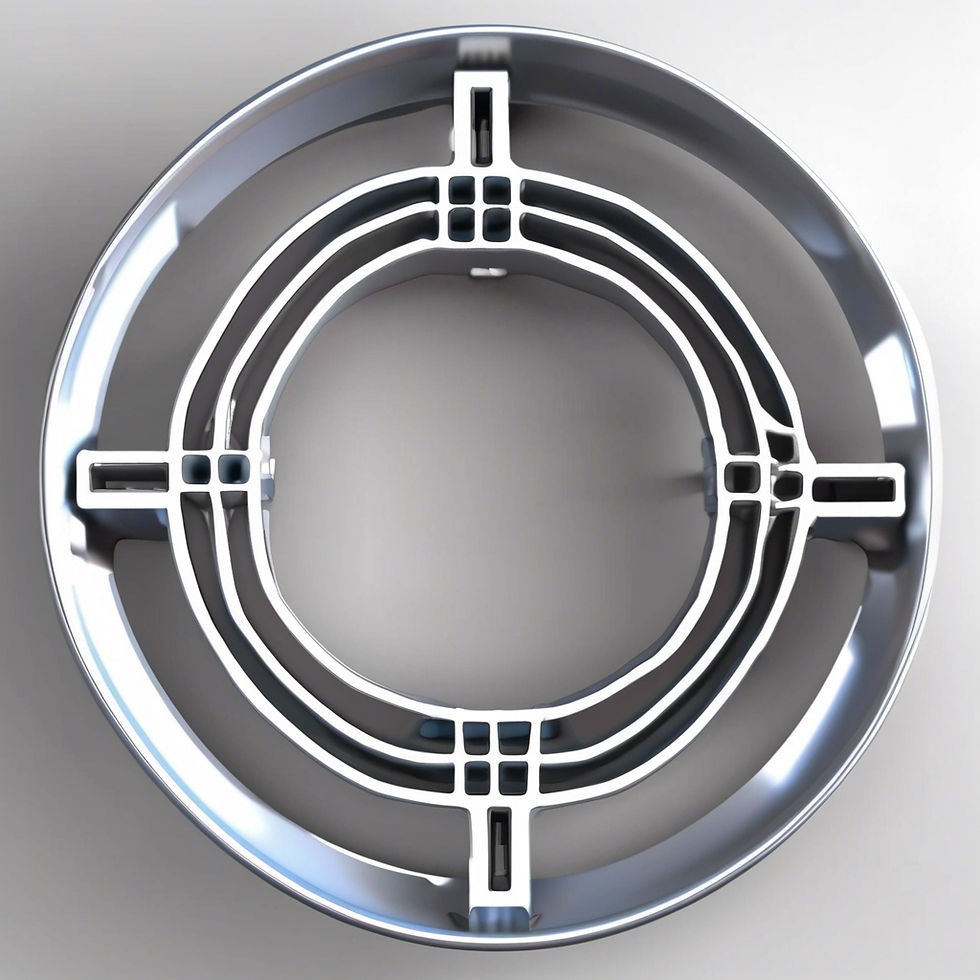CNC Machine Parts for Critical Applications
- hktenlita1
- May 17, 2024
- 4 min read

CNC (Computer Numerical Control) machines have revolutionized the manufacturing industry, enabling the production of highly complex and precise parts. These machines are indispensable for critical applications across various sectors, including aerospace, automotive, medical, and electronics.
How Does CNC Machine Produce Complex Parts?
CNC machines operate based on pre-programmed sequences of machine control commands that dictate the movement of tools and machinery. These commands are derived from CAD (Computer-Aided Design) models and translated into G-code, which the CNC machine interprets to execute precise cuts, drills, and milling operations. The process begins with creating a digital design, which is then converted into a format that the CNC machine can understand.
The ability to produce complex parts lies in the CNC machine's multi-axis movement capabilities. Unlike traditional machining tools on a single axis, CNC machines can work on multiple axes simultaneously, often up to five or more. This allows intricate geometries and detailed features to be machined highly. Additionally, CNC machines can work with various materials, including metals, plastics, and composites, making them versatile for different critical applications.
Advanced CNC machines have features such as automatic tool changers, high-speed spindles, and real-time monitoring systems, further enhancing their capability to produce complex parts. Integrating these technologies ensures that the parts are manufactured with minimal human intervention, reducing the risk of errors and improving consistency.
Design And Tolerance Conditions For CNC Machine
Designing parts for CNC machining requires careful consideration of various factors to ensure manufacturability and adherence to required tolerances. Tolerance refers to the permissible limit of variation in a physical dimension, which is critical for ensuring that parts fit and function correctly in their intended applications.
When designing for CNC machining, it is essential to:
Understand the Machine's Capabilities: Different CNC machines have varying capabilities in speed, precision, and the types of operations they can perform. Designers must be aware of the specific machine's limitations and strengths.
Material Selection: The choice of material significantly impacts the machining process. Some materials are easier to machine than others, and the selected material must align with the part's functional requirements and the CNC machine's capabilities.
Geometry and Complexity: Complex geometries may require multiple setups and specialized tooling. Designers should aim for simplicity while ensuring the design meets all functional requirements.
Tolerance Specifications: It is crucial to specify realistic tolerances. Overly tight tolerances can increase machining time and cost, while too loose tolerances may compromise the part's functionality. A balance must be struck to meet both performance and cost objectives.
Surface Finish Requirements: The desired surface finish can influence the choice of machining processes and tools. To achieve the necessary surface quality, some applications may require additional finishing processes, such as polishing or coating.
By considering these factors, designers can create parts that are not only manufacturable but also meet the stringent requirements of critical applications.
When Is It Best To Opt For CNC Machined Parts?
CNC machining is an excellent choice for producing parts that require high precision, complex geometries, and specific material properties. It is particularly advantageous in the following scenarios:
Prototyping and Customization: CNC machining allows rapid prototyping and customization, making it ideal for developing new products and custom parts. The ability to quickly iterate designs and produce small quantities of parts is invaluable in the early stages of product development.
Low to Medium Volume Production: For low to medium production volumes, CNC machining offers a cost-effective solution compared to other manufacturing methods like injection molding, which requires expensive tooling.
High-Precision Applications: In industries such as aerospace, medical, and electronics, where precision and accuracy are paramount, CNC machining provides the necessary control to achieve tight tolerances and intricate details.
Complex Geometries: CNC machines excel at producing parts with complex shapes and features that would be challenging or impossible to achieve with traditional machining methods.
Material Versatility: CNC machining can work with various materials, including metals, plastics, and composites, providing flexibility for various applications.
Consistency and Repeatability: CNC machines ensure consistent quality and repeatability, which is critical for maintaining high standards in manufacturing processes.
When to Consider Other Options
While CNC machining offers numerous advantages, there are situations where other manufacturing methods may be more appropriate. Here are some considerations for opting for alternatives:
High-Volume Production: Injection molding or die casting may be more cost-effective for large-scale production due to lower per-unit costs despite higher initial tooling expenses.
Simple Geometries: Traditional machining or other methods like stamping or extrusion may be more efficient and economical for parts with simple shapes and low precision requirements.
Material Constraints: Some materials may not be suitable for CNC machining due to their hardness, brittleness, or other properties. Alternative methods like additive manufacturing (3D printing) or casting better suit such materials.
Lead Time and Cost Considerations: CNC machining can be time-consuming and expensive, especially for intricate parts requiring multiple setups. In cases where lead time and cost are critical factors, other methods offer faster and cheaper solutions.
Post-Processing Requirements: Certain manufacturing methods may inherently produce the desired surface finish or properties, reducing the need for additional post-processing. For example, injection molding can produce parts with smooth surfaces and fine details directly from the mold.
Design Flexibility: Additive manufacturing (3D printing) allows for greater design flexibility and can produce complex parts without requiring extensive tooling or multiple setups. This can be advantageous for creating prototypes or parts with intricate internal structures.
Conclusion
CNC machining is a powerful tool for producing complex, high-precision parts for critical applications. By understanding the capabilities and limitations of CNC machines, designing parts with appropriate tolerances, and considering the specific requirements of each application, manufacturers can leverage the strengths of CNC machining to achieve exceptional results. As a CNC machined parts exporter, it's essential to recognize when other manufacturing methods may be more suitable, balancing factors such as volume, cost, material properties, and design complexity to select the best approach for each project.



Comments